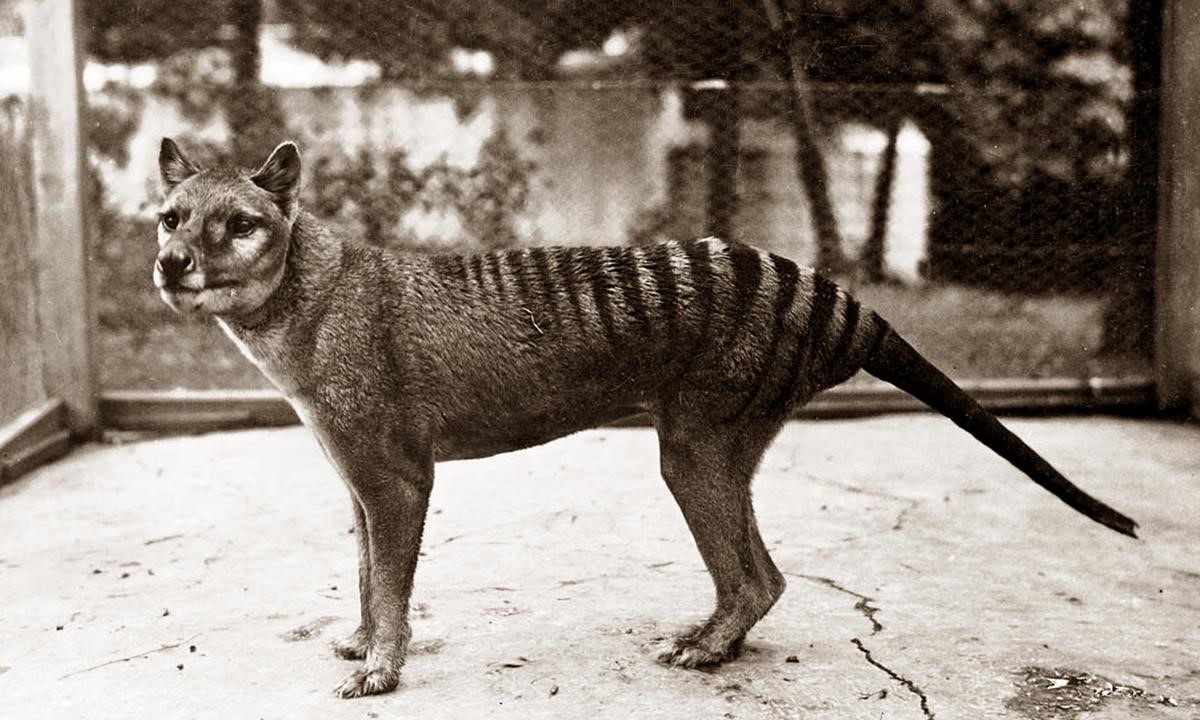
The Thylacine, also known as the Tasmanian Tiger, was a unique marsupial native to Tasmania, Australia, and New Guinea. This fascinating creature, with its dog-like appearance and distinctive striped back, captured the imagination of many. Sadly, the last known Thylacine died in captivity in 1936, leading to its classification as extinct. Despite this, the Thylacine remains a subject of intrigue and speculation, with numerous unconfirmed sightings reported over the years. What made the Thylacine so special? From its nocturnal habits to its unusual reproductive traits, there are many intriguing aspects of this elusive animal. Let's dive into 34 captivating facts about the Thylacine that highlight its unique place in the animal kingdom.
Key Takeaways:
- Thylacines, also known as Tasmanian Tigers, were unique carnivorous marsupials with dog-like features and a keen sense of smell. They were solitary hunters and had a low reproductive rate, contributing to their vulnerability.
- Despite being declared extinct, there are still reports and myths surrounding Thylacines, fueling ongoing fascination and hope for their rediscovery. They hold a special place in the cultural history of Australia and Tasmania, serving as a symbol of wildlife conservation.
What is a Thylacine?
The Thylacine, also known as the Tasmanian Tiger, was a carnivorous marsupial native to Australia, Tasmania, and New Guinea. Despite its tiger-like stripes, it was more closely related to kangaroos and koalas. Here are some fascinating facts about this unique creature.
- The Thylacine had a dog-like appearance with a stiff tail and abdominal pouch, similar to kangaroos.
- It was the largest known carnivorous marsupial of modern times.
- The Thylacine's fur was yellow-brown with 15-20 dark stripes across its back and tail.
- Unlike most marsupials, both male and female Thylacines had pouches.
- The Thylacine could open its jaws to an impressive 80 degrees.
Thylacine's Habitat and Behavior
Understanding the Thylacine's habitat and behavior helps us appreciate its role in the ecosystem.
- Thylacines were nocturnal hunters, primarily active during the night.
- They preferred forests, grasslands, and wetlands as their habitats.
- Thylacines were solitary animals, only coming together during mating season.
- They had a keen sense of smell, aiding them in tracking prey.
- Thylacines were known to be shy and avoided human contact.
Diet and Hunting Techniques
The Thylacine's diet and hunting methods were unique and adapted to its environment.
- Thylacines primarily fed on small mammals, birds, and occasionally livestock.
- They used a combination of stealth and endurance to hunt their prey.
- Thylacines had strong jaws and sharp teeth designed for slicing meat.
- They were known to hunt alone rather than in packs.
- Thylacines could cover large distances while hunting, showcasing their stamina.
Reproduction and Lifespan
Reproduction and lifespan details provide insight into the Thylacine's life cycle.
- Female Thylacines gave birth to 2-4 joeys at a time.
- Joeys stayed in the mother's pouch for up to three months before venturing out.
- Thylacines reached sexual maturity at around two years of age.
- The average lifespan of a Thylacine in the wild was estimated to be 5-7 years.
- Thylacines had a low reproductive rate, contributing to their vulnerability.
Extinction and Conservation Efforts
The extinction of the Thylacine is a poignant reminder of the impact of human activities on wildlife.
- The last known Thylacine in the wild was killed in 1930.
- The species was declared extinct in 1936 after the last captive Thylacine died in Hobart Zoo.
- Habitat destruction and hunting were major factors in their extinction.
- Thylacines were often blamed for livestock losses, leading to bounty hunting.
- Conservation efforts have included cloning attempts, though none have been successful.
Cultural Significance and Legacy
The Thylacine holds a special place in the cultural history of Australia and Tasmania.
- Thylacines feature prominently in Aboriginal rock art, indicating their significance in indigenous culture.
- They were often depicted in early European settler accounts and illustrations.
- The Thylacine is an emblem of Tasmania, appearing on the state's coat of arms.
- Numerous books, documentaries, and films have been made about the Thylacine.
- The Thylacine remains a symbol of the importance of wildlife conservation.
Modern-Day Sightings and Myths
Despite being declared extinct, there are still reports and myths surrounding the Thylacine.
- Numerous unconfirmed sightings of Thylacines have been reported in Tasmania and mainland Australia.
- Some believe that small, isolated populations may still exist in remote areas.
- Cryptozoologists continue to search for evidence of surviving Thylacines.
- The Thylacine's mysterious disappearance fuels ongoing fascination and hope for its rediscovery.
The Thylacine's Legacy
The Thylacine, also known as the Tasmanian Tiger, remains a symbol of the delicate balance between nature and human activity. Despite its extinction in the 20th century, the Thylacine continues to captivate scientists and enthusiasts alike. Its unique features, like the striped back and dog-like appearance, make it a fascinating subject of study. Efforts to understand and possibly revive the species through genetic research highlight the ongoing interest in this remarkable animal. The Thylacine's story serves as a poignant reminder of the importance of conservation and the impact humans have on the environment. By learning from the past, we can strive to protect the diverse species that share our planet today. The Thylacine may be gone, but its legacy endures, urging us to cherish and safeguard the natural world.
Frequently Asked Questions
Was this page helpful?
Our commitment to delivering trustworthy and engaging content is at the heart of what we do. Each fact on our site is contributed by real users like you, bringing a wealth of diverse insights and information. To ensure the highest standards of accuracy and reliability, our dedicated editors meticulously review each submission. This process guarantees that the facts we share are not only fascinating but also credible. Trust in our commitment to quality and authenticity as you explore and learn with us.
